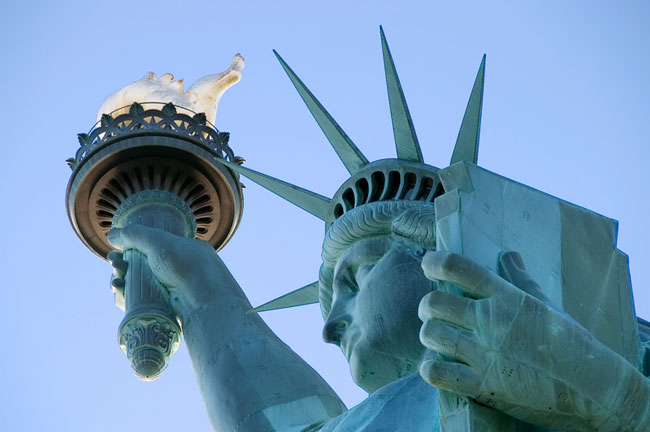Xenophobia Founded on Faulty Assumptions

America has always been a cultural melting pot, but that pot has always been kept at a rolling bubble by the heat of xenophobia. And sometimes it boils over causing great damage.
Every generation of citizens, many of them immigrants themselves or of recent immigrant ancestry, is afraid of the next wave of others looking for a better life. The fear has always been that those "other" people, the ones who are invading this country, will pollute the gene pool and degrade the culture in some manner.
The truth, of course, is always a surprise to those who want to close and lock the gates.
Recently, researchers used a large cross-national data set of math scores of 15 year-old children to figure out how being an immigrant kid might affect academic achievement. The teens had come from 35 countries of various economic levels. Surprisingly, the kids coming from less-developed countries had higher math test scores in their adopted countries than immigrants from better developed nations.
In other words, the most disadvantaged kids turned out to be the whiz kids.
This eye-opening research is actually nothing so new. It stands on the shoulders of America's first biological anthropologist, Franz Boas, a German immigrant who wanted to show, with real data, that there was nothing wrong with accepting new citizens from anywhere.
At the time (the first decade of the 20th century), physical anthropology was very much into physical measurements as markers of race (an assumption Boas helped disprove). Boas had access to physical measurement, such as height and head circumference, on more than 17,000 people, some who were immigrants and other who were still in their native country.
Sign up for the Live Science daily newsletter now
Get the world’s most fascinating discoveries delivered straight to your inbox.
Everyone had assumed that skeletal measures must surely be immutable, that immigrants would resemble their home countrymen and women more than those of their new land. But Boas discovered that there were huge differences in these measures between immigrants and the folks back home.
In other words, immigration to a new country, better known as culture change, altered bodies, which means that environment greatly affects what we look like, sometimes more than genes.
Boas, of course, had a political agenda. There was strong xenophobia during those times, and he wanted to show that there was nothing to fear — once in this country, we could all have the same head shape. The current research shows that it's also impossible to also stereotype what happens academically to immigrants.
That's not to say that immigration can't have a negative affects. For example, Mexican-Americans born in the United States express a much higher rate of mental disorders such as depression than Mexicans who have recently immigrated to the United States or stay in their homeland. Presumably, the parents are glad to be here in the land of opportunity, but their children grow up in this environment of plenty and can be disappointed with their lives.
It's almost impossible to factor out how immigration affects individuals and populations because everyone experiences change differently. Human are, by their very nature, products of genes, environment and experience.
And that's what makes life interesting.
- The Greatest Modern Minds
- Quiz: The State of the United States
- Quiz: America in 1915
Meredith F. Small is an anthropologist at Cornell University. She is also the author of "Our Babies, Ourselves; How Biology and Culture Shape the Way We Parent" (link) and "The Culture of Our Discontent; Beyond the Medical Model of Mental Illness" (link).









